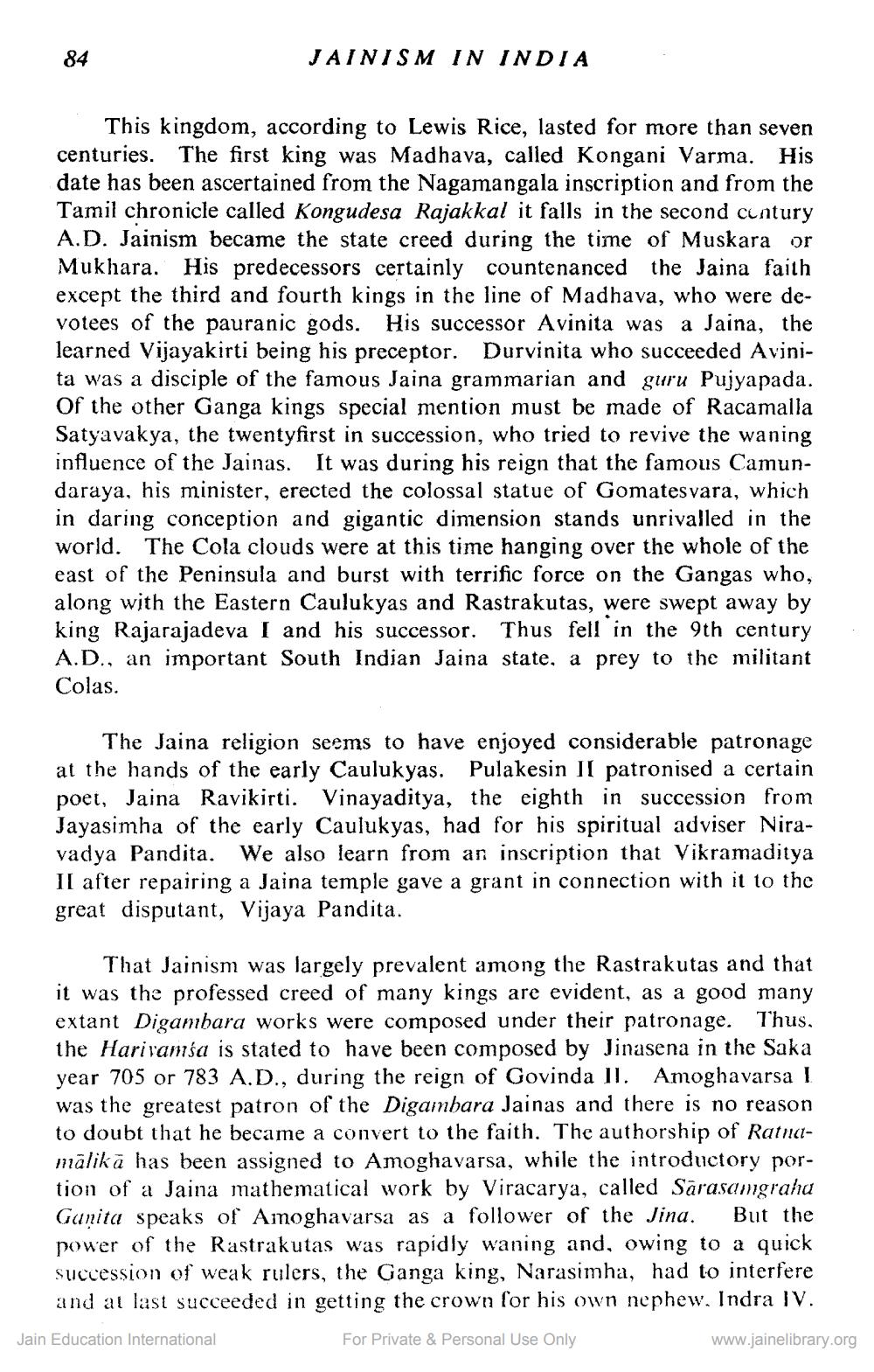________________
JAINISM IN INDIA
This kingdom, according to Lewis Rice, lasted for more than seven centuries. The first king was Madhava, called Kongani Varma. His date has been ascertained from the Nagamangala inscription and from the Tamil chronicle called Kongudesa Rajakkal it falls in the second cuntury A.D. Jainism became the state creed during the time of Muskara or Mukhara. His predecessors certainly countenanced the Jaina faith except the third and fourth kings in the line of Madhava, who were devotees of the pauranic gods. His successor Avinita was a Jaina, the learned Vijayakirti being his preceptor. Durvinita who succeeded Avinita was a disciple of the famous Jaina grammarian and guru Pujyapada. Of the other Ganga kings special mention must be made of Racamalla Satyavakya, the twentyfirst in succession, who tried to revive the waning influence of the Jainas. It was during his reign that the famous Camundaraya, his minister, erected the colossal statue of Gomatesvara, which in daring conception and gigantic dimension stands unrivalled in the world. The Cola clouds were at this time hanging over the whole of the east of the Peninsula and burst with terrific force on the Gangas who, along with the Eastern Caulukyas and Rastrakutas, were swept away by king Rajarajadeva I and his successor. Thus fell in the 9th century A.D., an important South Indian Jaina state, a prey to the militant Colas.
The Jaina religion seems to have enjoyed considerable patronage at the hands of the early Caulukyas. Pulakesin II patronised a certain poet, Jaina Ravikirti. Vinayaditya, the eighth in succession from Jayasimha of the early Caulukyas, had for his spiritual adviser Niravadya Pandita. We also learn from an inscription that Vikramaditya II after repairing a Jaina temple gave a grant in connection with it to the great disputant, Vijaya Pandita.
That Jainism was largely prevalent among the Rastrakutas and that it was the professed creed of many kings are evident, as a good many extant Digambara works were composed under their patronage. Thus, the Hari ramsa is stated to have been composed by Jinasena in the Saka year 705 or 783 A.D., during the reign of Govinda II. Amoghavarsa I was the greatest patron of the Digambara Jainas and there is no reason to doubt that he became a convert to the faith. The authorship of Ratnamālikā has been assigned to Amoghavarsa, while the introductory portion of a Jaina mathematical work by Viracarya, called Sārasamgraha Ganita speaks of Amoghavarsa as a follower of the Jina. But the power of the Rastrakutas was rapidly waning and, owing to a quick succession of weak rulers, the Ganga king, Narasimha, had to interfere
and at last succeeded in getting the crown for his own nephew. Indra IV. Jain Education International For Private & Personal Use Only
www.jainelibrary.org




